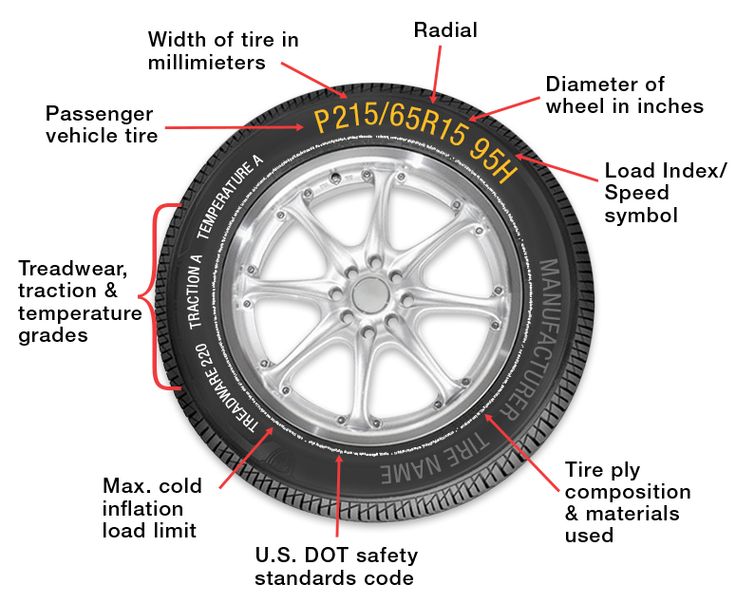Your car's tires play many valuable roles in the safety and function of your vehicle — from helping you navigate twists, turns, and stops like a pro to carrying the full weight of your car. That's why it's important to pay special attention to these essential components.
Fortunately, maintaining the proper tire pressure on your vehicle is one of the easiest yet most effective ways to care for your car tires. Learn how to check air pressure and inflate your tires with this helpful guide.
Underinflated tires can not only reduce fuel efficiency, but it can also run the risk of getting into an accident, losing proper steering control, damaging various components of your vehicle, and more. If you notice that your tire's air pressure levels have dropped, it's best to prioritize inflating them as soon as possible.
Checking your vehicle's tire pressure is a relatively simple task. You'll want to start by purchasing a tire gauge. These vary in price depending on the type you choose (i.e., digital, basic, etc.) but can usually be found for well under $40. It's also essential to keep a tire gauge on hand, as some gas station air hose gauges are not always accurate. Many modern cars and trucks also display the tire pressure for each tire on the dashboard. Once you have your tire gauge in hand, it's time to determine the proper pressure for your vehicle.
Find the correct inflation level. To do this, you can either look for the recommended pressure on the sticker within your driver's-side door jamb or consult your car owner’s manual. This is the tire pressure specification when the tires are cold, meaning not driven for a few hours.
Remove the valve stem cap from your tire. Some cars and trucks have green valve stem caps with an “N” on them - this means the tire is filled with nitrogen instead of air (air is mostly nitrogen). If your tires have these green valve stem caps, you can find some special stations that dispense nitrogen, but be aware that you can use normal air as well. The inflation pressure specifications are the same regardless if the tire is filled with air versus nitrogen.
The inflation pressure specifications are the same regardless if the tire is filled with air versus nitrogen.
Connect your air pressure gauge to the tire’s valve stem until you receive a reading.
If the pressure level number seems unrealistic, remove the gauge and try again. This time, ensure that the indicator is connected firmly to the valve stem.
It's not always possible to tell if a tire is underinflated by giving it a quick once over. So, check your PSI levels with a gauge each month and after extreme temperature changes. You'll also want to check your pressure levels when your tires have had time to cool down since air expands within your tires while driving.
Filling your tires with air at a gas station is relatively simple. Bring your tire gauge and some spare change since some are coin-operated and are not always accurate in their pressure readings. Try to make this the first stop if you are running errands so that your tires are still relatively cool from sitting for a few hours. Then, follow these steps:
Then, follow these steps:
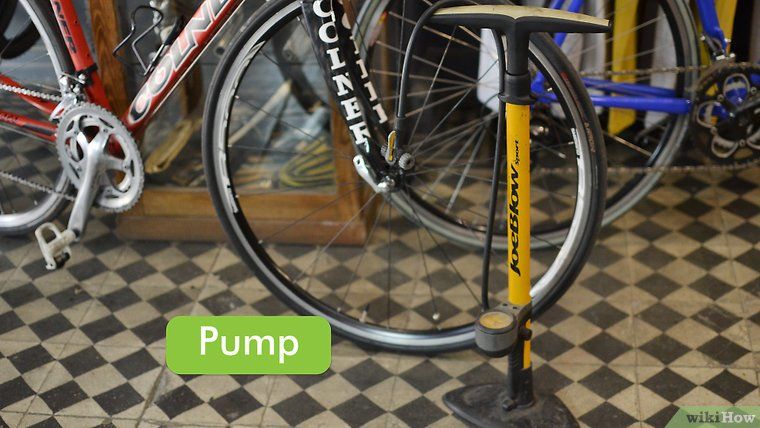
Can't find an air filling station near you or just want some help? Head to your local Firestone Complete Auto Care. We'll give you a free tire inspection and refill your tires free of charge. And if you need new tires, we've got you covered there too!
When life gets busy and you’re more focused on where you’re going than how you’re getting there, the air pressure in your tires can be easy to overlook. But when it comes to tire maintenance, proper inflation is one of the easiest ways to maximize your safety, performance and tire life. So if it’s been a while since you’ve checked yours, come in and let one of our experts do it for free.
So if it’s been a while since you’ve checked yours, come in and let one of our experts do it for free.
Is your TPMS Light on, or do your tires feel deflated?
Come in for a Free Tire Air Pressure Check today.
Schedule an Appointment
While our tire technicians are happy to check your tire pressure for you any time, it’s also something you can do yourself. To prevent over- or under-inflation and the possible tire failure that comes with them, follow these steps:
 It is normal for tires to heat up and the air pressure inside to go up as you drive. Never “bleed” or reduce air pressure when tires are hot.)
It is normal for tires to heat up and the air pressure inside to go up as you drive. Never “bleed” or reduce air pressure when tires are hot.)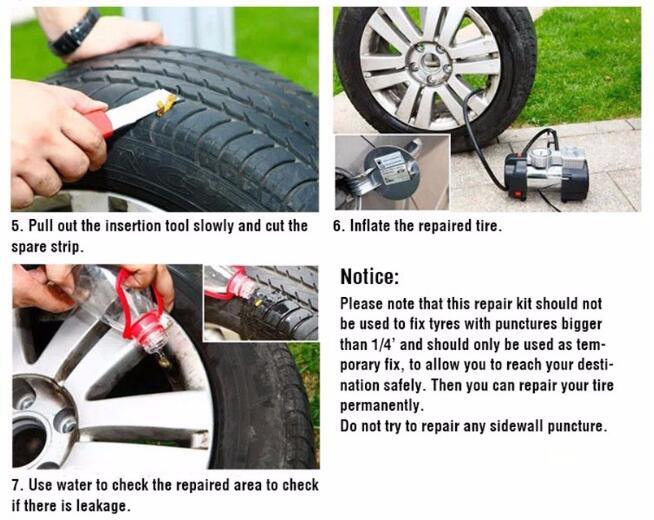
NOTE: Air pressure in a tire goes up (in warm weather) or down (in cold weather) 1–2 pounds for every 10 degrees of ambient air temperature change.
The optimum air pressure for each tire on your vehicle is determined by the engineers who assisted in the design and production of your car. Proper tire pressure and inflation aid in optimizing the tire's and vehicle's driving performance, grip on the road while driving, and overall ride quality. Maintaining your vehicle’s tire pressure to the recommended pressure is critical to your vehicle’s ability to stop, start, and turn corners.
There are a few different places listed below to find your recommended proper tire pressure around your vehicle.
Stop by a Just Tires location near you today and we’ll check the tire air pressure on your vehicle free of charge.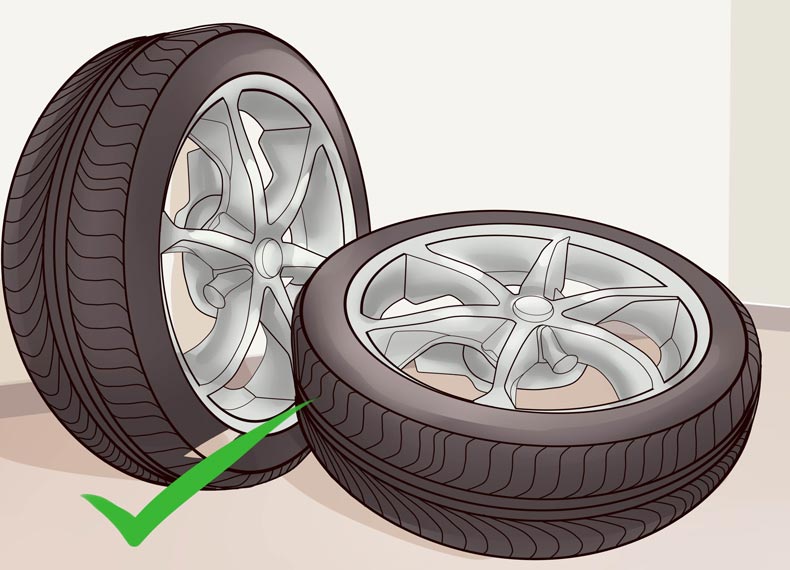
LEARN MORE
Tire Size
Learn MoreTire Maintenance
Learn MoreTread Depth
Learn MoreCar tire is responsible for driving safety and comfort. It needs to be kept in working order. This is a prerequisite for long and safe operation. Not all drivers know how to pump up a wheel, we will analyze the nuances of this work in more detail.
Tire pressure is an important parameter, it is he who is responsible for the main technical characteristics of the wheel. The car manufacturer calculates this parameter in advance and indicates it in the recommendations.
If a tire is underinflated, this will lead to increased fuel consumption in the first place.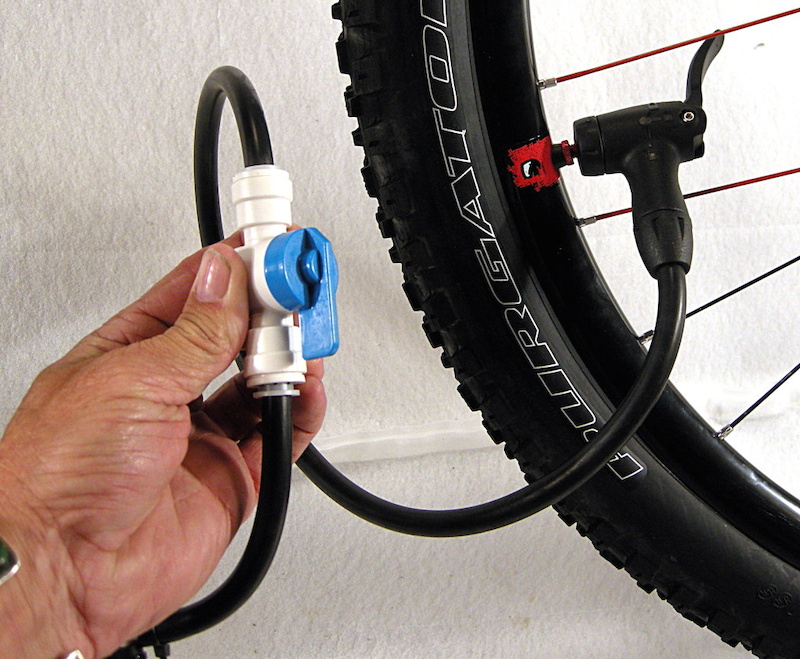 This is due to a decrease in the rolling coefficient. Uneven grip with the road surface also occurs, leading to a decrease in traffic safety, this is felt in the form of more difficult driving. Tire wear increases, with a strong drop in pressure, the rim of the disc can cut the sidewall.
This is due to a decrease in the rolling coefficient. Uneven grip with the road surface also occurs, leading to a decrease in traffic safety, this is felt in the form of more difficult driving. Tire wear increases, with a strong drop in pressure, the rim of the disc can cut the sidewall.
It is also not worth pumping tires. The tire will wear unevenly, the middle part of the tread will suffer. Increased pressure can provoke an explosion and complete destruction of the tire on the road. In addition, the stiffness of the wheel will increase, and the braking efficiency will decrease.
Pressure checks must be carried out at least once a month. If there are sudden changes in temperature outside, it is necessary to check the parameter every two weeks. Be sure to check the pressure before every long trip.
Visually inspect tires in the morning. If there are doubts about the quality of the pump, it is worth checking the pressure, if necessary, pump up the tire. Checking and pumping should be carried out on all wheels, different tire pressures can lead to loss of vehicle controllability.
Checking and pumping should be carried out on all wheels, different tire pressures can lead to loss of vehicle controllability.
Be sure to check the condition of the spare wheel.
Tire pressure is determined by the car manufacturer, he finds out through tests to what extent the rubber can be inflated. The data must be indicated in the documents for the vehicle.
For greater simplicity, additionally indicate the parameters on the plate. It can be found on the A-pillar of the car or on the inside of the gas filler flap. In rare cases, a plate with the main technical parameters may be on the door. It remains to find a plate on your car and see to what pressure to pump tires.
There are certain pumping rules. They include not only data on how much air to pump into the tire, but also when to do it. The main requirement is to inflate the tire only after a long parking. The tire heats up while driving. According to physical laws, temperature directly affects gas pressure. Accordingly, immediately after the stop, the indicator will not be accurate.
The tire heats up while driving. According to physical laws, temperature directly affects gas pressure. Accordingly, immediately after the stop, the indicator will not be accurate.
It is necessary to wait for the moment when the temperature of the air in the tire is equal to the outside temperature. It takes 3-4 hours for this. After waiting so long, you can accurately measure the pressure. It is most convenient to do pressure measurement and pumping in the morning, after overnight parking.
Inflating a car tire is not difficult, but a beginner may have a few questions. We will analyze the stages of the process, in the end you will know how to properly pump up the wheel. To work, you will need a pump, you can use a foot or compressor. Now there are compressors that run on the cigarette lighter. If the pump does not have a pressure gauge, this device will also be needed.
Let's walk through how to inflate a tubeless tire step by step.
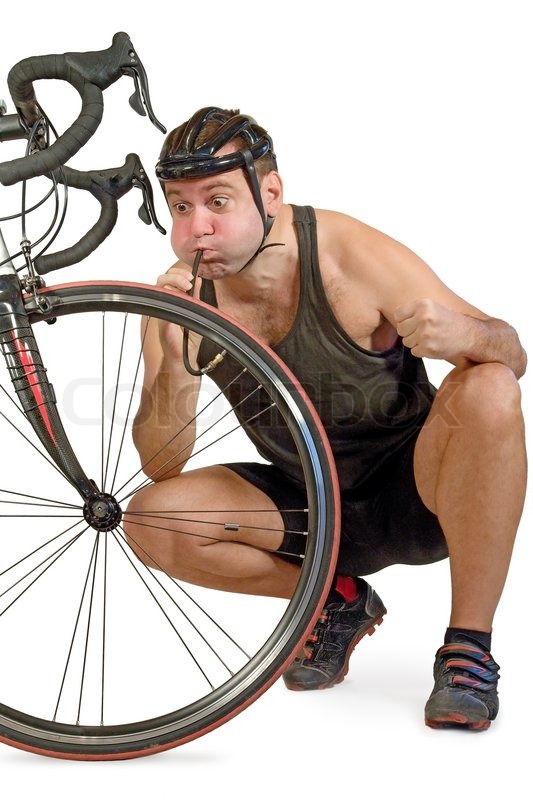
Further, all the described procedures are repeated on the remaining wheels, including the spare. Now the car is ready to drive.
If the pump is foot operated, all steps are the same, except for the power connection. The air supply is carried out by setting the pump piston in motion, this is done by foot.
Inflating a car tire is a simple job. This can be done by every car owner, even with no experience at all. The main thing is to know the basic rules, they are simple, it will not be difficult to fulfill them. But save time on a trip to a car service.
Optimum tire pressure is a guarantee of the safety of car passengers, as well as a guarantee of tire durability.
The car must be “cold”, that is, before the measurement, the car’s mileage must be less than a couple of hours, the vehicle must travel no more than 2 km.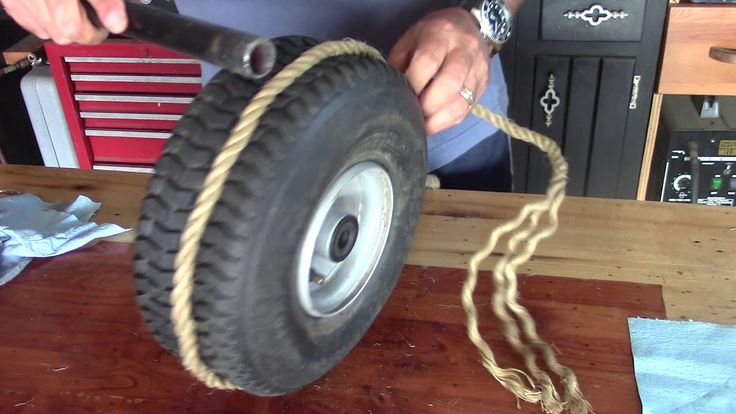
When you need to measure the pressure urgently, subtract 0.3 bar from the measurement. The operation should be carried out before every big trip and more often than once every 30 days. It is important not to forget about the spare wheels: they also need to check the pressure level. The optimal level varies, so it’s worth asking the manufacturer for the exact figure, and it wouldn’t hurt to find the instructions for the car and look there. The value can be marked on the body compartment, gas tank and side pillar.
It all depends on the weather and operating conditions. The nominal mark varies, for example, on how warm or cold it is outside the car. Drops in winter have a strong effect, so experts recommend adding 0.2 bar to the measurement result to objectively determine the pressure level.
If the pressure level on the front axle is less than the nominal one, then this will change the handling: the wheels will turn poorly. Incorrect pressure in the rear will cause the car, on the contrary, to move too sharply. Slip on wet pavement appears due to a decrease of 0.5 bar, since the contact of the tire with the road becomes less. A level of 2 atmospheres will lead to full contact. The lower the contact, the greater the risk. Therefore, the pressure affects the quality of the ride.
Incorrect pressure in the rear will cause the car, on the contrary, to move too sharply. Slip on wet pavement appears due to a decrease of 0.5 bar, since the contact of the tire with the road becomes less. A level of 2 atmospheres will lead to full contact. The lower the contact, the greater the risk. Therefore, the pressure affects the quality of the ride.
In addition, the lower the level of inflation of the wheels, the greater the consumption of gasoline, and this promises financial losses. Too much pressure increases tire wear. Therefore, do not underestimate the importance of maintaining the pressure level set by the manufacturer. This can lead to a car accident.
The ability of a tire to withstand loads is directly related to pressure. If the pressure is low, do not overload the car. When determining the optimal level, you do not need to focus solely on the tire load index.
Raising the level is permissible if it is necessary to increase the carrying capacity of the car. But for most cars, this is dangerous by the rapid destruction of tires. For trucks, special tires are sold that provide an additional degree of protection. They have a special designation: XL, Reinforced or "C".
But for most cars, this is dangerous by the rapid destruction of tires. For trucks, special tires are sold that provide an additional degree of protection. They have a special designation: XL, Reinforced or "C".
The ability to accelerate the car depends on the inflation of the tires. To increase the speed, the pressure is increased. The ZR index on the tire indicates that with such a tire you can reach speeds of up to 245 km per hour. But we advise you to contact the manufacturer for details and clarify this indicator.
A pressure of 3.2 atmospheres is optimal for tires with a T marker. An increase of this figure by 0.3 atmospheres is suitable for tires marked H, W, V, Y, ZR. Exceeding these figures is dangerous in many ways. Adequate pressure ensures proper weight distribution and longer life.
When the nominal pressure in the tires is lowered, the wear resistance becomes less because heat begins to be generated. Because of this, overheating and destruction occurs. Pressure below normal leads to a deterioration in indicators such as the ability to maneuver and elasticity.
Pressure below normal leads to a deterioration in indicators such as the ability to maneuver and elasticity.
Note that tire pressure is an important property that must be monitored. Failure to pay attention to a detail that is so important for safety can lead to damage to the vehicle and to an accident. It should become a good habit for the driver to maintain the correct level.
Do not try to determine the pressure yourself. Use a manometer. This device will accurately measure the indicator. For a novice car enthusiast, it is not easy to realize the level of pressure by internal sensations, it is important to contact the salons and ask to pump up the tires. A decrease in temperature by 8 degrees entails a decrease in pressure by 0.1 atmospheres.
Don't underestimate the importance of tire condition. The life of people sometimes depends on the strength and wear resistance of wheels. In this regard, it is necessary to properly care for the tires.
As already noted, incorrect pressure can cause poor handling and tire damage. Let us remind you once again of the importance of checking the pressure on a car that has traveled no more than 2 km on the day of the control.
Is there a valve cap? If not, then the nipple will be prone to contamination. Check tires for cuts, cracks, holes or bulges. All this speaks of dilapidation. There should be no foreign objects, including wires and glass. Remember that a tire with such damage is not suitable for use. Do not bring to the destruction of the tire on the go.
Wear leads to breaks. There is a fear of losing control when driving through puddles. Keep track of the remaining tread height. According to the traffic rules, it is forbidden to use a car whose residual height of the pattern is less than 1.